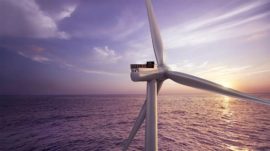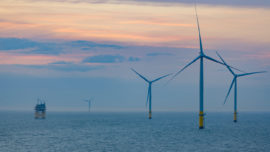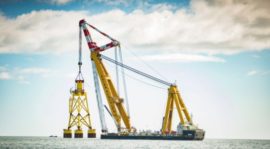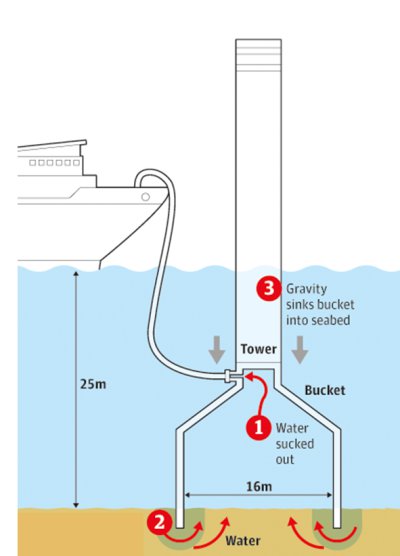Siemens Gamesa Renewable Energy and Aalborg University in Denmark announced a partnership last month to lead the new i4Offshore research and development project, which will focus on significantly reducing the cost of offshore wind power through demonstrating and testing new technologies.

As announced on December 14, Siemens Gamesa and Aalborg University will lead the Integrated Implementation of Industrial Innovations for Offshore Wind Cost Reduction project, shortened to the snappier i4Offshore. The project is supported by a €20 million grant from the European Union’s (EU) Horizon 2020 research and innovation program and aims to demonstrate and test new offshore wind power technologies which will lead to cost-cutting solutions. The technologies to be tested will also be used to make offshore wind farms more environmentally friendly compared to other electricity sources, be they fossil fuel-based or renewable energy sources.
“Siemens Gamesa is committed to reducing the cost of offshore wind energy, and greatly welcomes this grant,” said Jesper Moeller, project lead and Senior Specialist in Offshore Technologies at SGRE’s Offshore Business Unit. “Our constant focus on innovation – along with strong partners, customers, and support such as from the EU – enables us to push the industry forward, delivering a lower Levelized Cost of Energy (LCoE) and higher annual energy production. The R&D work we’ll do during this project has clear goals of benefitting our customers, ratepayers, and society-at-large.”
In addition to Siemens Gamesa and Aalborg University, a further 15 project partner companies will be involved in the i4Offshore project, including Universal Foundation A/S, Bladt Industries A/S, Per Aarsleff A/S, Salzgitter AG, Windar Renovables, Dr. Techn. Olav Olsen AS, NKT Cables GmbH & Co KG, SINTEF Ocean, Bureau Veritas Marine & Offshore SA, Maersk Broker K/S, Deugro Danmark A/S, Fred. Olsen Windcarrier, and the Technical University of Denmark (DTU).
Innovation For Cost-Reduction

Siemens Gamesa describes the i4Offshore project as being “based on classical engineering disciplines” including structural analysis, geotechnical engineering, production, and risk analysis, and will work around the complete installation of a future version of a full-scale Siemens Gamesa offshore wind turbine. New technologies will include a new 1,000-tonne bucket foundation, a steel jacket, a concrete transition piece, and a new cable connection.
In the end, the aim of the project is to reduce the Levelized Cost of Energy (LCoE) for offshore wind so as to make it more competitive against other electricity sources.
“One of the challenges of offshore wind energy is that the high cost of building offshore wind turbines has necessitated various governmental subsidies to improve the business case,” explained Lars Bo Ibsen, Professor at Aalborg University. “While all forms of industrial power generation receive governmental support, whether from renewable, fossil, or other sources, our project aims at making offshore wind energy even more cost-effective without external financial support.
“We already have a lot of pieces that we know work separately,” Ibsen added. “Now we are in the process of assembling them into a large puzzle, and testing that they work together. As this is proven, we look to demonstrate to customers, banks, and investors that offshore wind makes even more financial and environmental sense for the future.”
Suction Bucket Jacket Foundation

One of the key technology innovations which impact both cost and environment is the testing of a bucket foundation. This is not the first time we have heard about bucket foundations for offshore wind farms. In March of 2018 the 25,000 tonne Asian Hercules III floating crane successfully completed the first-ever installation of a suction bucket jacket foundation (see right) for Vattenfall’s 92.4 megawatt (MW) European Offshore Wind Deployment Centre (EOWDC) — an installation which only took 15 hours.
The EOWDC was always intended as a wind farm which would serve to test new technologies, serving as a demonstration facility for construction and operation technologies which can reduce the costs of offshore wind and increase construction speed.
i4Offshore will be doing much the same — though, presumably (at the moment) only for the one Siemens Gamesa turbine — including the use of a suction bucket jacket foundation. Unlike traditional foundations — which require significant seafloor preparation and which are installed through hammering a massive slab of concrete into the seafloor, which in turn dramatically disturbs nearby sealife — suction bucket jacket foundations are virtually noise-free and much quicker.
“Using a suction-bucket foundation benefits whales and other undersea life by eliminating the soundwaves which hammering causes,” explained Siemens Gamesa’s Jesper Moeller. “Also, once the wind turbine has exhausted its many years of operational life, the suction buckets, jacket foundation, and transition piece can be decommissioned and removed relatively easily. The materials, including steel, concrete and cables, can be re-used in a highly resource-efficient manner.”
The best way to describe suction bucket jacket foundations, also known as caisson foundations, is the way 4C Offshore did in 2016: “Suction caissons are best described as upturned buckets that are lowered into marine sediment, to anchor structures.” The upturned bucket then has the water pumped out of it to lower the inside pressure, creating negative pressure and extreme weight to sink the foundation into the sea floor.






